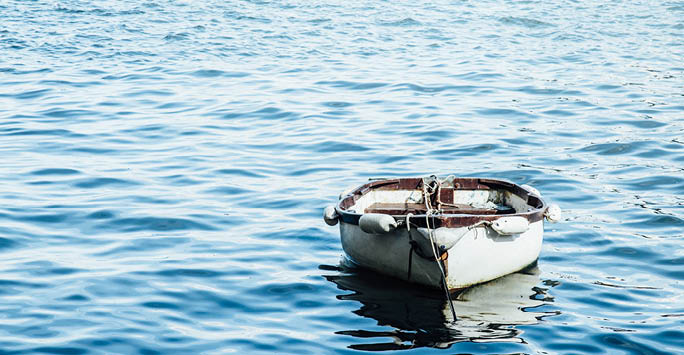The Spectacle of Small Boats and the New Meaning of ‘Illegality’
Posted on: 15 June 2023 by Dr Anne Neylon in Blog

In British media, the public is regularly confronted with the image of migrants arriving by boat at the shores of the state. The image is a variation of a familiar tableau – a group of often racialised people in life-jackets aboard a small boat, sometimes being helped aboard a lifeboat that will bring them to Britain.
The image has become so ubiquitous that it has shaped British immigration law and policy to the extent that the most recent bill – the Illegal Migration Bill – has been referred to by the Prime Minister as well as a variety of ministers as the ‘Stop the Boats Bill’. The issue of the legality or illegality of movement has therefore been reduced to the image of small boat, the spectacle of hypervisible arrival to the state and the supposed threat therein. It is worth considering therefore, the degree to which the spectacle of boat arrivals has shaped and will continue to shape the policy of deterrence and what this means for the trajectory of asylum law and policy in Britain.
The Refugee Convention establishes the rules about who qualifies as a refugee and what rights they are entitled to. The UK is one of the founding states of the Convention and has been a signatory since its inception in the 1950s. The Convention explicitly recognises that there may be occasions where a person who needs to flee their country of origin will not be able to wait to apply for a visa to enter a host state and may need to travel to the state without documentation. In this way, their entry to the state is not ‘illegal’ but rather necessary in order to access the state. To apply for asylum, one must be present in the host state. In the UK, as well as in most states, there is no such thing as an ‘asylum visa’, that people can apply for before travelling to the country. The nature of international refugee law therefore often necessitates clandestine movement across borders in order to access the asylum system.
The government however insists that those arriving on small boats are ‘illegal migrants’, regardless of whether they are in need of protection under the Refugee Convention. Those who have passed through ‘safe third countries’, according to the new Bill, will be detained and removed to another state to make their asylum application. They will not be permitted to access the asylum system in the UK.
The government’s policy has been consistently criticised, both from the perspective of international and human rights law commitments that the government has made, as well as from the perspective of UK public law. These arguments however have left the government unmoved. The continual refrain has been to ‘stop the boats’ because they are ‘illegal’. This narrative of illegality has expanded to the extent that the Home Secretary has referred to all people arriving to the state on small boats, regardless of their need for protection, as ‘criminals’.
Categorising small boat arrivals in this way not only acts to delegitimise their entitlement to asylum under law, but also attacks their moral entitlement to protection, as well as the compassion that the British public should have towards them.
Ultimately, the reason that the government has so confidently rejected the variety of legal arguments made against it’s plans to ‘stop the boats’ is because ‘illegality’ has been reduced to an aesthetic. The image of asylum seekers and migrants arriving to the state in small boats has become the visual representation of illegality, regardless of whether those on board are in need of international protection.
The way in which we are presented with images of refugees and the narrative that accompanies them must therefore be challenged. Images of migrants and asylum seekers have become shorthand for illegal and criminal activity. As these spectacular images become abstracted from their context and their meaning, the ability to challenge government policy to ‘fight illegal migration’ in the language of law also diminishes. The reduction of migrants and asylum seekers to mere imagery in this way has been deeply damaging.
These images are not neutral, and are presented to the public in a way that is steeped the political agenda of both the government and the media. Now, as imagery can be more easily manipulated, it is imperative that the image itself is critically challenged. Far from faceless criminals, asylum seekers are human beings fleeing from persecution and even the threat of death. Equally, those who are labelled simply as ‘economic migrants’, in reality are people fleeing crushing poverty that is often connected to the effects of the climate crisis. This however must not descend into the stereotypical binary of the ‘good’ as opposed to the ‘bad’ migrant, but rather reflect the complexity and messiness of human existence. It is therefore crucial to think beyond these kinds of labels and emphasise solidarity when holding an oppressive government to account.
Keywords: refugee, immigration, asylum, law, human rights.